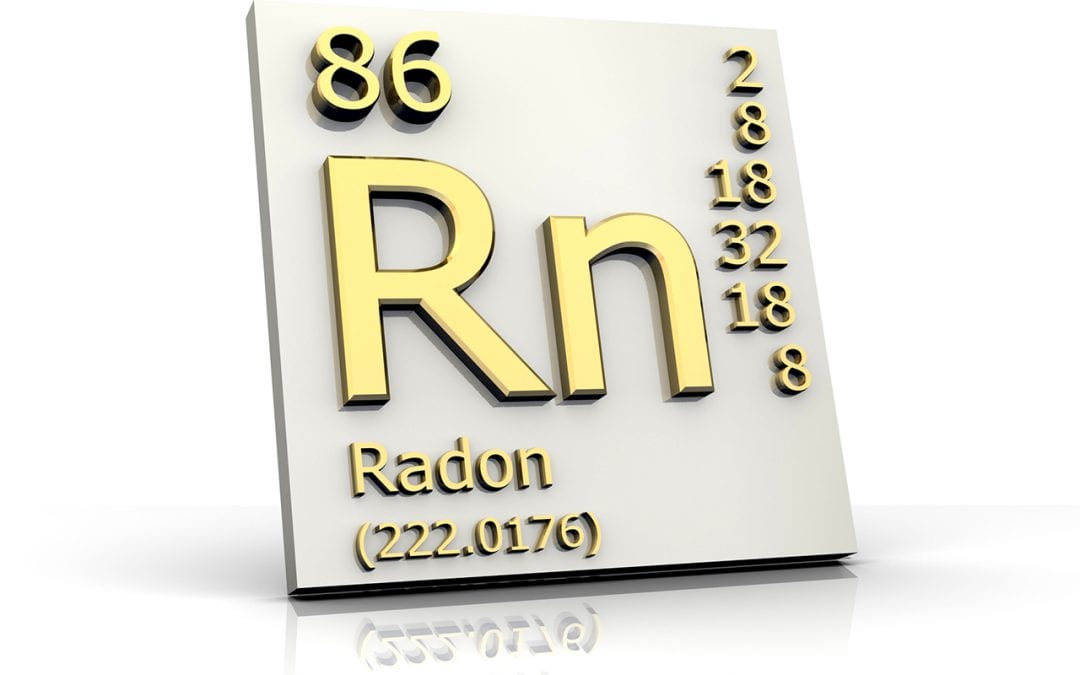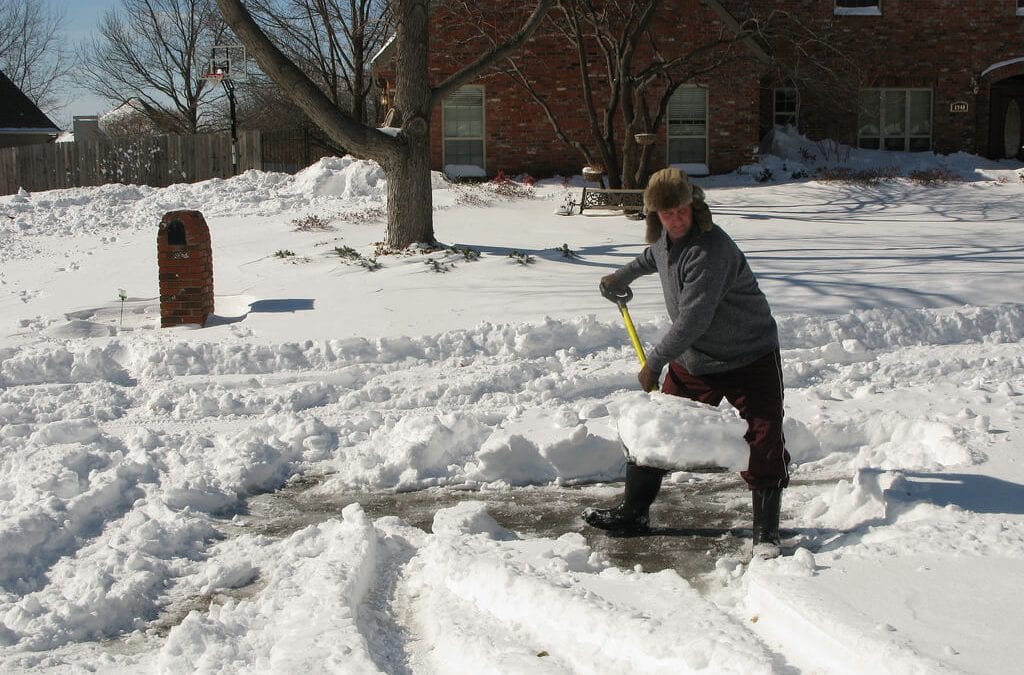
by mwonfor | Jul 19, 2018 | Community, Home Maintenance, Seasonal
Spring seems to be the time when the lawn takes care of itself. A lawn that was dormant all during the winter suddenly comes back lush and green. It does not seem to need mowing very often, and if rain is abundant, it may not even need to be watered. However, the heat of summer can make lawn maintenance more difficult. Here are tips to help maintain a healthy summer lawn:
For a Healthy Summer Lawn, Fertilize Every 6-8 Weeks
Fertilizing strengthens the grass and helps it endure summer’s heat and drought. A slow release fertilizer is best when applied in early Spring, and there are different fertilizers depending on whether the lawn is in the north or in the south. Keep feeding the lawn every 6-8 weeks until the fall. Some fertilizers come with additives to control pests and help the lawn retain water.
Don’t Cut It Too Short
Though the grass may be growing quickly by summer, it still should not be mowed more than a third of the height of the grass blade for a healthy summer lawn. Tall blades are better able to send their roots deep into the soil to find water, and they also shade the soil beneath which keeps the ground cool and discourages weeds. Though some homeowners think it’s a little unsightly, it’s best to leave the grass clippings on your lawn after mowing. They provide valuable nutrients that contribute to a healthy summer lawn.
Treat for Grubs
If grubs are a problem when it comes to the lawn, the earlier they are dealt with the better. One natural way is to add beneficial nematodes at about 50,000 per square foot of lawn. Milky spore powder also takes care of grubs, as does 5 percent rotenone solution, pyrethrin, and neem oil.
Eradicate Weeds While They’re Seedlings
As for weeds, it’s best to eradicate them while they’re still young. Some weeds can be treated with an herbicide that doesn’t hurt the grass, while others are so invasive that they need to be pulled up from the roots.
Water Deeply and Early for a Healthy Summer Lawn
During the midsummer, it’s a good idea to check how deeply the water penetrates the lawn after it’s watered. The best time to water the lawn is early in the morning so the soil is able to absorb the water before it evaporates in the hot sun.
American Home Inspection Services is Southeastern Michigan’s premier service provider for home inspections, commercial inspections, radon testing, mold inspections, mobile home inspections, and home watch services. Contact us to schedule your appointment.

by mwonfor | Jun 20, 2018 | Community, Home Inspection, Home Maintenance
Before purchasing a home, it is important to first have a home inspection and a radon test. If there are high levels of radon present in the house, there are a few ways to reduce radon levels and minimize the risk to your family’s health.
As a colorless, odorless gas, radon cannot be seen or smelled, but it still may be present in your home. The EPA reports that radon is the second-leading cause of lung cancer in the United States. Found in soil, radon seeps into the home through cracks, doors, windows, and other openings. When it becomes trapped in the house, people in the home unknowingly breathe in the substance and cause damage to the cells of the lungs.
How to Reduce Radon Levels in the Home
Radon is found everywhere. As many as one-third of all homes have a higher amount of radon in the air than the EPA’s recommended maximum safety level. Since you cannot see or smell this gas, testing is the only way to learn if radon mitigation should begin. The EPA recommends annual professional radon testing to reduce risks. There are many ways to reduce the radon levels in the home now and after testing. You should:
- Seal all entry points into the home, since this is where gas leaks into the home. It is also a source of energy loss. Check areas around the foundation, the plumbing system, the basement, and sump pumps. Always seal cracks.
- Ensure there is proper ventilation in your home. Without proper ventilation, there is more pollution in the home and it also draws in radon and other harmful gases.
- Install ventilation in crawl spaces and around the foundation to reduce radon levels.
- Use the ceiling fan to help circulate air around the house and to remove toxins from the air. The ceiling fan reduces the plate-out or the energy charge released from radon that damages the tissues of the lungs.
The Radon Inspection
Professional home inspectors use a variety of techniques to measure radon levels in a house. Passive devices do not require power to test for radon while the active devices do require power. The inspector will determine which inspection technique is best for your home. Both short-term and long-term inspections are available. If you’re buying a home, the short-term inspection, including two to three-days of tests, is likely to be the technique used. It is a good idea to use a long-term inspection later down the road and to have your home tested regularly for radon.
What is a Radon Mitigation System?
Professional radon mitigators can help homeowners develop a plan of action to minimize the radon levels in their home. The EPA recommends that homes have radon levels no greater than 4 pCi/L. If an inspection shows that levels are higher than this number, it is important to develop a mitigation plan at once. Although radon is not visible and has no smell, it can be deadly. Put a plan in place if high radon levels threaten your home and health.
American Home Inspection Services provides radon inspections to Southeast Michigan, along with other home inspection services. Contact us if you need your home tested for radon.

by mwonfor | May 21, 2018 | Community, Home Maintenance, Seasonal
During the summer months, there’s no better way to enjoy the outdoors with friends and family than grilling out. In order to keep your gas grill functioning well for years to come, it is important to properly clean and maintain it. The more you cook on the grill, the more there is to clean. Over time, greasy residue and buildup can clog burners and even become a fire hazard. Here are 3 tips on how to clean and maintain a gas grill:
Monthly Leak Check
It’s a good idea to get into the habit of doing routine propane leak checks. About once a month, you should turn the propane on and pour soapy water over the connections. You’ll notice bubbles if there is a hole in any of the lines. If no bubbles are present then there is no leak. If you notice bubbles you should replace the line or tighten the connections to the tank.
Use a Cover to Maintain a Gas Grill
It is always a good idea to use a cover over the grill whenever it isn’t being used. Exposure to the elements can cause rust and damage the grill. Rust can ruin a grill and cause it to become non-functional. Most grill manufacturers make specific covers for their grills. It is worth the investment to purchase one.
Clean Regularly
Keeping your grill clean is the best way to ensure it lasts for years. After each time you cook, it is important to use the wire brush to clean the gunk off the grates. Wiping down the exterior with soapy water is also a good idea to keep the grill properly maintained. Deep cleaning of the grill only needs to be done every couple of months as needed. Deep cleaning consists of actually removing the burner protectors and wiping debris from the burners. Finally, you’ll want to get rid of all the gunk in the bottom of the grill. All of this can be done with soapy water and a sponge.
By using these tips to maintain your gas grill, you can ensure it lasts for years worth of cookouts. The key to a long-lasting gas grill is proper care and maintenance. By inspecting your grill for propane leaks, keeping it covered, and cleaning thoroughly, you can expect your grill to last for years.
American Home Inspection Services helps home buyers, home sellers, and homeowners in Southeastern Michigan know everything they can about their home. If you would like to schedule a home inspection service, click here to contact us.

by mwonfor | Mar 21, 2018 | Community, Home Inspection
Most people dream of becoming a homeowner and consider it a financial investment that pays off over the years. For those who are new to the process of buying a house, it can be difficult to know where to begin. If you’re ready to buy your first home, read on for a few essential steps to take.
Get Pre-Approved
Many people make the mistake of shopping around for their first home before they secure the financing with a loan. Sellers won’t take you seriously if you make an offer but haven’t been approved for a home loan yet. You’ll need to apply for a loan through a bank or financial institution and provide all of your information, which includes your debt-to-income ratio, household income, and list of assets.
Secure Employment
You’ll need to have at least one year of employment at the same establishment to provide proof that you’ll be able to make your mortgage payments on time after you buy your first home. It’s important to avoid changing jobs or becoming self-employed while your application is pending to reduce the risk of being denied.
Calculate What You Can Afford
One of the main steps of preparing to buy a new home is determining what you can afford before you begin shopping around. Add up your household income and multiply it by two or three. You’ll also need to factor in the cost of property taxes, homeowner’s insurance, HOA fees, utilities, and the cost of repairs or upgrades that are needed in the future. The amount of debt that you’ve accumulated will also influence what you can afford, which includes auto loans, student debt, and credit card debt. According to forbes.com, your mortgage payment should be 25 to 35 percent of your monthly income.
Save a Down Payment to Buy Your First Home
The down payment is needed to secure your loan and will also influence how much money you pay towards your mortgage each month. Evaluate your budget to look for expenses that can be cut out to save more money. Consider cutting the cord on your cable television and limiting non-essential activities or purchases. Preparing more meals at home and using coupons at the grocery store can also allow you to reduce what you spend each month to ensure that you can save more for a down payment.
Conventional mortgages typically require 20 percent down on the house, but if you get an FHA loan, you may only need 3.5 to 10 percent of the selling price of the home. If you’re a veteran, you can take advantage of a VA loan, which has lower interest rates and doesn’t require a down payment when you buy your first home.
Increase Your Credit Score
Your credit score is one of the leading factors that lenders evaluate when determining if they’ll provide you with a loan to buy a house. The credit score determines how well you repay outstanding debts and manage your money. Most lenders require a score of at least 580 to qualify for a mortgage. You can boost your score by making your credit card payments on time and paying off accounts that have high balances. Avoid closing any of your accounts, which can reduce the length of your history as a buyer and can negatively affect your credit score.
Taking the necessary steps to prepare for buying a new home will allow you to have a smooth and successful process. You can have peace of mind knowing that you’re taking the right steps to purchase a house that is within your price range and that you’ll enjoy long-term.
While a home inspection is not required to buy a home, it is an essential step to take so you’re confident about your investment and tp avoid costly and troublesome surprises later on. If you are in Southeast Michigan and are buying your first home, contact American Home Inspection Services today!

by mwonfor | Feb 28, 2018 | Community, Home Maintenance
Increase the Value of Your Home with Updates that Won’t Break the Bank
There are a great may home improvement ideas to be discovered, so how are you supposed to know which ones are going to increase the value of your home for the least money? Your bathrooms and your kitchen add a lot of value to your home, so you should be concentrating your home improvement efforts on these rooms. But if these rooms look great already, there’s no need to put more money towards them. Instead, you can go through our home improvement list to find projects to take on that will increase your home’s worth at a reasonable cost.
Add Hardwood Flooring
One of the very best things you can do to increase the value of your home is to update your floors. There’s no need to rip up the floors throughout your home. You can focus instead on larger sections or areas that have seen more wear and tear. Get rid of old carpet or tile and install hardwood flooring in its place. If you already have hardwood floors, you can refinish them for a home improvement that will be wallet-friendly.
Replace Dated Fixtures
There are ways to improve your entire home without needing to tear anything up. Every room of your house probably has outdated fixtures, from your lighting to the knobs on your cabinets. Even though these might be considered details, if they look worn, they’re going to keep your home from making a good impression. Replacing your out-of-date fixtures with newer ones will be an easy and worthwhile home improvement to make.
Update Old Cabinets
This is a home improvement you can do in those all important rooms—your kitchen and your bathrooms—as well as in other parts of your home. Paint or re-stain your cabinets—you might even do the same to your dressers and chests of drawers while you’re at it.
Increase Your Curb Appeal
Don’t forget the outside of your home when you’re striving to increase its value. Your home’s exterior is what’s going to be making that essential first impression. You want to make anyone who sees your house grow curious about what lies behind the door.
Take care of your lawn and add some flowers, even if they’re in decorative planters by the door. Take care of any necessary cosmetic repairs, like chipped paint or cracks in your driveway. By enhancing the way that your home looks from the outside, you’ll be increasing its value as a whole.
Shoot for Energy Efficiency
More and more homebuyers are in search of a home that’s going to be a value to them long after closing. If your house is drafty or if the HVAC system needs updating, this means that they’ll have to spend more money in the long run, which could send them running in the opposite direction of your home. Embrace energy efficiency by sealing up your windows, using LED lights instead of traditional incandescent bulbs, and fixing any leaks that may be present. These small improvements will be worth a great deal in the eyes of prospective buyers.
These are just a few affordable steps you can take towards getting a bigger return on your investment. Click here for many more ideas on how to increase your home’s worth.
American Home Inspection Services offers certified home inspection services to Southeast Michigan. To schedule our services call (248) 459-7007 or use our online request an inspection tool.

by mwonfor | Dec 22, 2017 | Community, Home Maintenance, Seasonal
Why is Shoveling Snow Safely Important?
When you think about the dangers of shoveling snow, you probably think about straining your muscles and aggravating back problems. While these are certainly concerns, a greater danger is that of a heart attack. Shoveling snow is an incredibly strenuous exercise, and being exposed to the cold weather will cause your blood vessels to constrict putting you at greater risk of having a heart attack. In fact, shoveling snow is the main reason that more heart attacks occur during the winter months. Read on for our tips for shoveling snow safely.
With regard to your aching back, try not to lift a shovel that’s filled with snow. Push the snow off of your driveway and sidewalks instead. If you find that you have to raise the snow, don’t let yourself twist around—face the same direction that you’re lifting. Stop what you’re doing as soon as you start to feel sore. You can always pick the shovel up again later.
How to Stay Safe While Shoveling Snow
- Don’t shovel snow right after you get up in the morning—you’re more likely to incur a slipped disc injury because of the fluid that builds up in the disc while you’re sleeping.
- Be sure to check with your doctor if you have a heart condition or any other reason to think that shoveling snow could be hazardous to your health.
- Put a snow and ice repellant on your shovel to prevent buildup. This will keep snow from sticking to it, which will lighten the load that you’re having to lift.
- Drink water before you begin and take breaks frequently.
Say No to Snow Throwers
Many people opt to use a snow thrower instead of shoveling their driveways and sidewalks because they think they’re much easier to use. Unfortunately, snow throwers are also incredibly dangerous. According to the Center for Disease Control and the United States Consumer Product Safety Commission, there are thousands of visits to the ER every year due to snow throwers, some of which involve amputation.
Snow Shoveling Services
If your neighborhood doesn’t include a teen who offers to do your shoveling for you for cash, you can always find a snow removal service online. It shouldn’t take more than a few clicks of your mouse to find an online referral service that will connect you with local snow shoveling services. If shoveling snow might be hazardous to your health, and particularly if you have a heart condition, this is a wise alternative.
In winter, your home needs special attention, and American Home Inspection Services can help. Click here for our article about home winterization, and here for our post about preparing your home before you leave for vacation. We welcome you to contact us if you are interested in scheduling any of our home inspection services.






